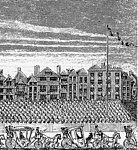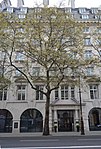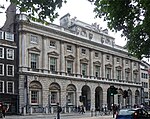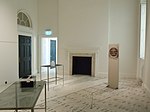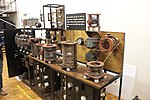Courtauld Gallery

The Courtauld Gallery (UK: ) is an art museum in Somerset House, on the Strand in central London. It houses the art collection of the Courtauld Institute of Art, a self-governing college of the University of London specialising in the study of the history of art. The Courtauld collection was formed largely through donations and bequests and includes paintings, drawings, sculptures and other works from medieval to modern times; it is particularly known for its French Impressionist and Post-Impressionist paintings. The collection contains some 530 paintings and over 26,000 drawings and prints. The head of the Courtauld Gallery is Ernst Vegelin. The gallery closed on 3 September, 2018 for a major redevelopment, called Courtauld Connects, and reopened on 19th November 2021.
Excerpt from the Wikipedia article Courtauld Gallery (License: CC BY-SA 3.0, Authors, Images).Courtauld Gallery
The Edmond J. Safra Fountain Court, London Covent Garden
Geographical coordinates (GPS) Address Nearby Places Show on map
Geographical coordinates (GPS)
| Latitude | Longitude |
|---|---|
| N 51.51175 ° | E -0.11747222222222 ° |
Address
Courtauld Institute of Art
The Edmond J. Safra Fountain Court
WC2R 1LA London, Covent Garden
England, United Kingdom
Open on Google Maps

